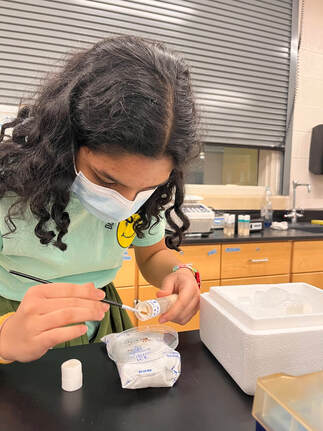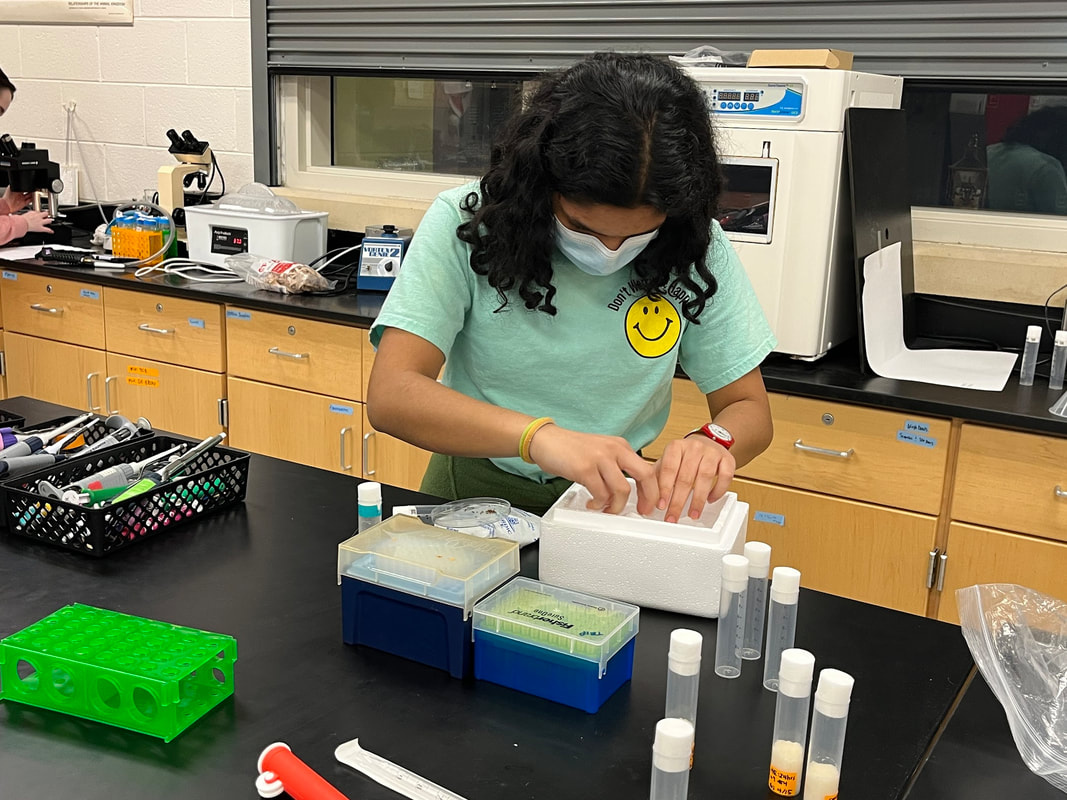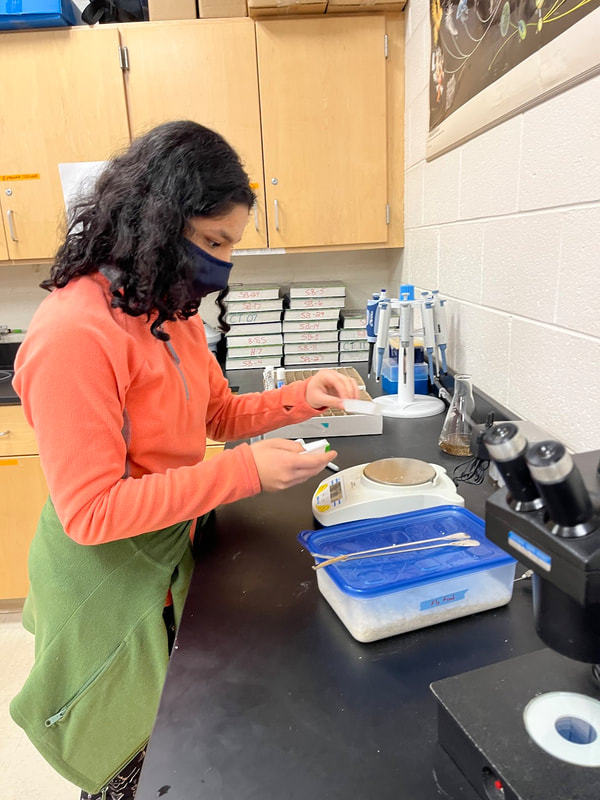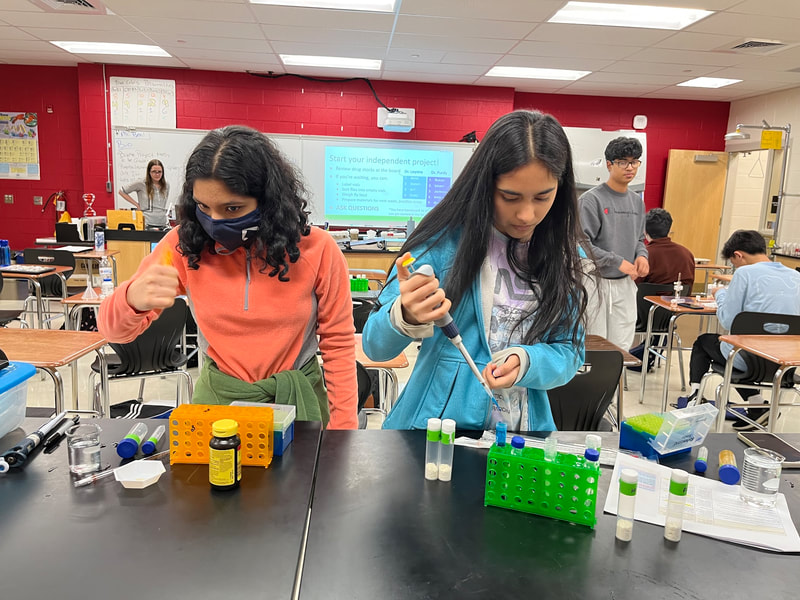|
I genuinely cannot believe how fast my TRIP journey has gone by! Not so long ago, it felt like I was starting my first day trying to understand the difference between a P-200 and P-1000 micropipette, and now I’m suddenly working on my presentation for the final symposium. From the knowledge I’ve gained to the friends I’ve made, I can officially call my first hands-on experience in the lab a success! However, I’d be lying if I said that it was all fun, games, and achievements. TRIP has given me the full beginner's research experience. While that now means being able to sort 120 flies in 15 minutes, that also includes mixing up pipettes, letting my files escape from my vials, and accidentally giving them head trauma.  For my independent project, I decided to study the effects of turmeric on fly health through development. I decided on this question because my family eats a lot of turmeric with the expectation that it gives us health benefits, like making us feel better when we’re sick. I used the negative geotaxis assay to measure how active the flies were based upon the different concentrations of turmeric they were given. My vials included a control with no turmeric, a calculated daily amount of turmeric for flies, 5x, and 10x that daily recommended amount of turmeric. When I first started making my drug stocks, I was shocked to find out how little turmeric was going in each of the vials. Since it was concentrated twice, I didn’t even see a hint of yellow orange turmeric when I was mixing it in with my food. However, I decided to trust the process and my math calculations. For the most part, my schedule in the lab stayed mostly the same. I would start by adding 2.5 grams of fly food into 4 new vials, and then collecting developmental data on all the other vials I was keeping. Afterwards, I’d add my concentrated drugs into the four new vials I created. Then, I’d sort 30 female and 30 male flies into the new vials. Admittedly, I wasn’t too good at fly sorting when I first started. It took me over 90 minutes and I needed help from the TAs. However, my skills improved as I found new techniques, such as keeping extra vials in case I sorted more than 60 flies in the 15-minute time range. After sorting I would start working on my assay. Save for the first week, I’d perform the assay on 8 vials. Some weeks, I would be able to complete my assay with no hitches, and other weeks I wouldn’t have enough flies in each of the vials. This could be because I accidentally let them escape or because many of them died over the course of the week. I was surprised when the latter occurred, since the assay only required 10 female flies, a third of the amount of female flies originally kept in the vial. It was sometimes very frustrating how long the project took to set up, since I had to knock the flies out using ice and transfer them to a different vial, which added up lots of time. I kept this lab schedule because I didn’t have to worry about needing materials that another student was currently using, and it allowed me to sometimes communicate with my other TRIPmates about their experiments and lives. The data I’ve collected so far proves that turmeric 1x and 10x lead to a slight increase in activeness, and shockingly, that 5x turmeric can decrease activeness slightly. Like all activities, there were parts I liked and parts I didn’t enjoy as much. I didn’t always enjoy the out-of-class homework, but I can say that it definitely helped me gain a deeper understanding of what my experiment meant. More than my experiment, however, I feel that I’ve learned something from every moment in TRIP, whether it be good or bad. Whether I got perfect measurements when creating fly food, or I tripped and dropped my fly vials on the ground, those are all experiences which I can use to build up my future. Though I’m near the end of this TRIP, my time here at WTHS’ 2023 Session A will forever have a place in my heart!
0 Comments
Your comment will be posted after it is approved.
Leave a Reply. |
Archives
April 2024
Categories
All
|



 RSS Feed
RSS Feed